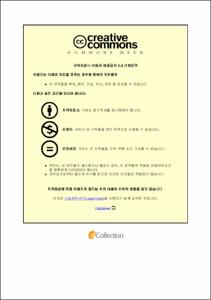전임상 및 임상 활용을 위한 스마트폰 기반 내시현미경 장비 개발과 생체 내시경 영상 데이터 정량화
- Abstract
- In the field of clinical diagnosis, endoscopy is a unique diagnostic tool that allows for obtaining optical images of various internal organs in the human body. Since the introduction of endoscopy in clinical practice, its importance and utility in clinical diagnosis have steadily increased along with the improvement of endoscopic performance. Due to the clinical significance of endoscopy, there have been attempts to apply endoscopy in the field of point-of-care testing (POCT), which is highly regarded in the medical field. Additionally, smartphones are considered one of the most important devices in the field of point-of-care testing due to their significant advancements in performance, portability, and widespread use. Given the importance of endoscopy and point-of-care testing, smartphones have been utilized as essential tools for the integration of endoscopy into point-of-care testing, and this study aimed to explore the possibility of acquiring endoscopic images using smartphones and utilizing them in the field of clinical diagnosis.
In the first study, we conducted research to investigate whether endoscopic images of vocal fold vibrations could be obtained using a smartphone’s camera and whether they could be used for image-based diagnosis. To acquire images of vocal fold vibrations, we utilized the high-speed shooting function of smartphones and used a self-developed endoscopic smartphone adapter to obtain actual clinical videos of vocal fold vibrations from four patients with different pathologies, in addition to normal subjects. The acquired clinical videos of vocal fold vibrations were quantified through image processing analysis, and the comparison of quantified variables demonstrated not only the distinction between normal subjects and patients but also the differentiation between pathologies in patients.
In the following study, aiming to enhance the diagnostic potential of smartphone-based endoscopic images as revealed in previous research, we sought to obtain functional images rather than mere laryngeal endoscopic images. We employed laser speckle contrast imaging (LSCI) analysis to achieve this. To implement LSCI, we developed an endoscopic smartphone adapter with additional components and verified its functionality through a phantom mimicking biological tissue. To prove that the validated equipment for LSCI analysis can be used in actual in vivo imaging, we acquired vascular images within the bladder of mice and demonstrated the differences in vascular images between mice with bladder cancer induction and normal mice through LSCI analysis.
As a final subsequent study, in addition to the analysis of LSCI developed in the previous research, we aimed to obtain diffuse reflectance imaging (DRI) to confirm tissue blood flow and the possibility of tissue damage caused by changes in oxygen saturation. To implement both LSCI and DRI, we used an RGB laser module, and similar to the validation method for LSCI, we used a phantom mimicking biological tissue to verify the capability of LSCI analysis. Furthermore, we conducted experiments involving the occlusion of mesenteric vessels in mice to verify the acquisition of tissue oxygen saturation images using DRI. By successfully implementing both LSCI and DRI in a smartphone-based endoscopic device, the possibility of using smartphone-based endoscopic imaging devices in actual clinical settings was further enhanced.
- Issued Date
- 2023
- Awarded Date
- 2023-08
- Type
- Dissertation
- Alternative Author(s)
- Youngkyu Kim
- Affiliation
- 울산대학교
- Department
- 일반대학원 의과학과 의공학전공
- Advisor
- 김준기
- Degree
- Doctor
- Publisher
- 울산대학교 일반대학원 의과학과 의공학전공
- Language
- eng
- Rights
- 울산대학교 논문은 저작권에 의해 보호 받습니다.
- Appears in Collections:
- Mechanical Engineering > 2. Theses (Ph.D)
- 파일 목록
-
-
Download
 200000687957.pdf
기타 데이터 / 4.02 MB / Adobe PDF
200000687957.pdf
기타 데이터 / 4.02 MB / Adobe PDF
-
Items in Repository are protected by copyright, with all rights reserved, unless otherwise indicated.